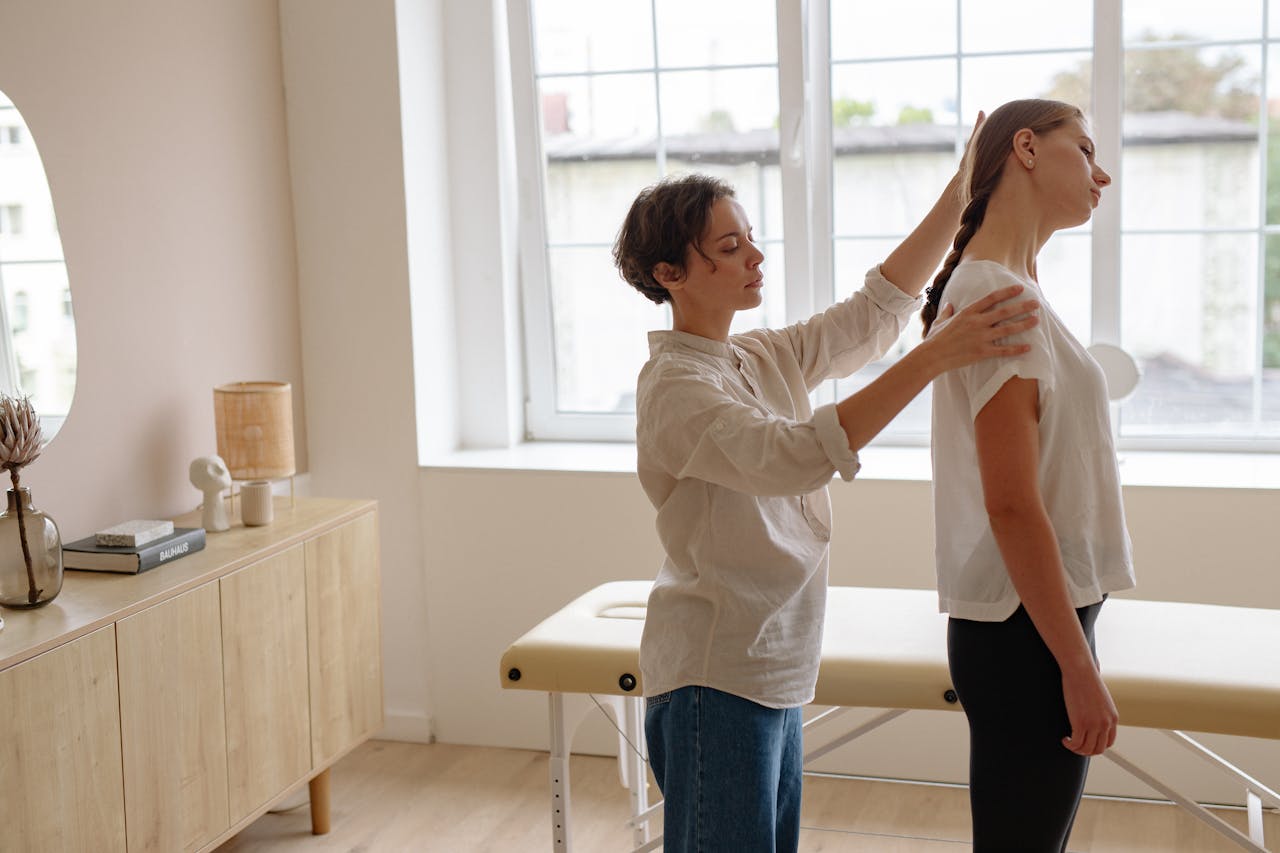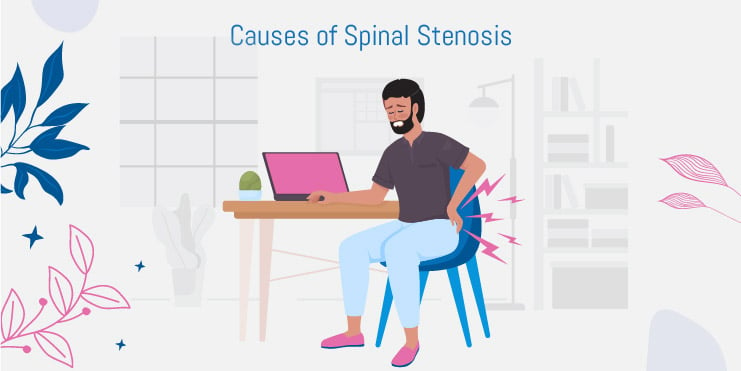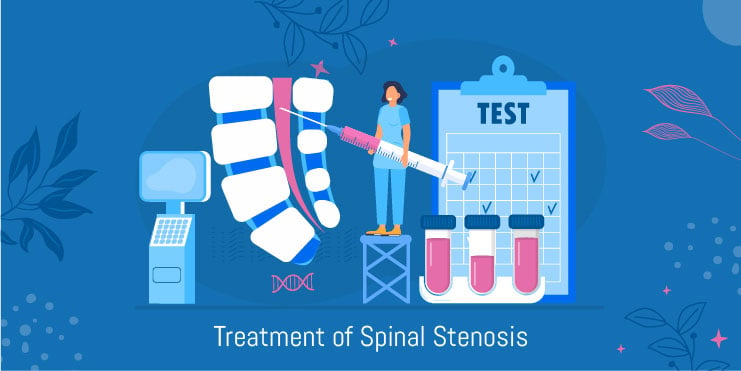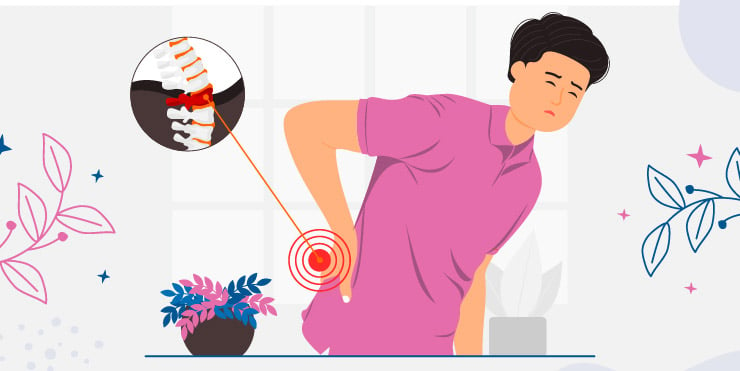6
What is Spinal Stenosis
Last Updated: November 4, 2024

Table of Contents
Spinal stenosis is when the spinal column narrows, resulting in decreased space for the spinal cord and spinal nerves.
Key Takeaways
- Definition and Causes: Spinal stenosis involves the narrowing of spaces within the thoracic and lumbar spine, which can put pressure on the nerves traveling through the spine. It is often caused by degenerative disorders such as osteoarthritis, herniated discs, thickened ligaments, and abnormal growths.
- Symptoms: Symptoms often include radiating nerve pain, numbness, tingling, and muscle weakness in the arms or legs. In severe cases, it can lead to balance problems and bladder or bowel dysfunction.
- Diagnosis: Diagnosis typically involves physical examinations and imaging tests such as MRI or CT scans to confirm the narrowing of the spinal canal. This helps in identifying any underlying musculoskeletal and skin diseases that may be contributing to the condition.
- Treatment Options: Treatments vary depending on the severity and may include physical therapy, medications, injections, and in some cases, surgery to relieve pressure on the spinal cord or nerves.
- Prevention and Management: Regular exercise, maintaining a healthy weight, and practicing good posture can help manage and prevent spinal stenosis. For those already affected, specific exercises and physical therapy can alleviate symptoms and improve mobility.
What is Spinal Stenosis?
There are many signs and symptoms of spinal stenosis, such as pain, tingling, and weakness in the neck, arms, legs, or feet. It can be in the upper region of the spine, called the cervical spine, or in the lower lumbar spine region. Spinal stenosis is also related to sciatica pain which originates in the sciatic nerve.
Various treatment options are available for people with spinal stenosis to help decrease symptoms, including exercise, physical therapy, massage, medications, and steroid injections. In other cases, people may undergo spine surgery to help relieve any pressure placed on the spinal cord or nerves.
Defining Spinal Stenosis
Spinal stenosis is caused by a narrow spinal canal which decreases space through the spinal canal. The spinal canal, also known as the vertebral canal or spinal column, comprises 33 vertebrae stacked on top of each other. The vertebrae can move due to facet joints between each vertebra. The facet joints are synovial joints covered in cartilage to help them glide on each other. Between each vertebra are intervertebral discs, which act as shock absorbers for the spine.
There are seven cervical vertebrae, twelve thoracic vertebrae, and five lumbar vertebrae, followed by the sacrum and the coccyx. One of the primary purposes of the spinal canal is to protect the spinal cord. The spinal cord is an extension of the central nervous system that begins at the brain stem's base and through the spinal canal. The spinal cord relays messages from the brain to the body and back to the brain.
Thirty-one pairs of spinal nerves exit the spinal canal either above or below each vertebra. Each spinal nerve root exits the spinal cord and spinal canal through intervertebral foreman spaces. In spinal stenosis, the narrowing of the spinal canal reduces space for the spinal cord and spinal nerves. Spinal cord/spinal nerves may become irritated, compressed, or pinched.
Some people with spinal stenosis may have no symptoms, and others may have significant effects that affect their daily living. Those with spinal stenosis in the cervical spine will experience most of the symptoms in their upper body, neck, arms, and hands. Those with lumbar spinal stenosis will feel the symptoms more in their buttocks, legs, or feet.
Causes of Spinal Stenosis
 Spinal stenosis may be congenital, which means it is present at birth. Congenital stenosis is when a person is born with a narrowed or small spinal canal. Spinal stenosis may be acquired due to other conditions or age-related changes in the spine. Most spinal stenosis is acquired and is most likely found in individuals over fifty years old. Some risk factors for spinal stenosis include scoliosis, a previous back injury, and excess calcium in the body. A condition called Paget’s disease, which is a rare bone disorder, may also be a cause of spinal stenosis.
Spinal stenosis may be congenital, which means it is present at birth. Congenital stenosis is when a person is born with a narrowed or small spinal canal. Spinal stenosis may be acquired due to other conditions or age-related changes in the spine. Most spinal stenosis is acquired and is most likely found in individuals over fifty years old. Some risk factors for spinal stenosis include scoliosis, a previous back injury, and excess calcium in the body. A condition called Paget’s disease, which is a rare bone disorder, may also be a cause of spinal stenosis.
One of the most common causes of spinal stenosis is osteoarthritis, a degenerative condition. With osteoarthritis, the cartilage, the protective covering of joints, wears away, and bones begin to rub together. This can cause inflammation and pain. The body occasionally responds to this degeneration by growing bone spurs which narrow the space in the spinal column and can cause pinching of the nerves in the spine.
Spinal stenosis may also be caused by spondylosis. Spondylosis is degeneration of the spine where the intervertebral discs and joints degenerate. Spondylolisthesis may also be a cause of spinal stenosis. Spondylolisthesis is when a vertebra slips forward and is out of place. Herniated disks may cause spinal stenosis as the bulging disk may pressure the spinal cord or roots. Other causes include thickened ligaments, spinal fractures, injuries, spinal cord cysts, or tumors.
Symptoms of Spinal Stenosis
General spinal stenosis symptoms include pain, numbing, tingling, and weakness in the neck, back, arms, legs, hands, or feet. In cervical spinal stenosis, there is often neck pain, numbness, or tingling in the arm, hand, leg/foot. In more severe cases of cervical stenosis, there may be balance problems, loss of functions and muscle weakness in the hands, and loss of bladder or bowel control.
When looking at lumbar spinal stenosis, there is most often pain felt in the buttocks, thighs, or calves with walking, running, and standing. This pain is usually relieved by flexing the back or sitting. Rarely, lumbar spinal stenosis can cause leg weakness or sensory loss around the perineum, anus, bladder, and bowel. Spinal stenosis symptoms often progress and worsen over time without treatment or intervention.
Lumbar spinal stenosis is also related to sciatica. Acquired lumbar spinal stenosis (LSS) is a common cause of sciatica in middle/ older patients. Sciatica results in pain/paraesthesia in the sciatic nerve, which originates from the Lumbar spine and runs down just past the knee.
Diagnosis of Spinal Stenosis
Diagnosis of spinal stenosis is usually based on clinical evaluation from a doctor following a physical exam and collection of medical history. Spinal stenosis may also be diagnosed based on imaging tests such as MRI (magnetic resonance imaging) or CT scans. X-ray scans may also be able to detect spurs.
Treatment of Spinal Stenosis
 Although there is no cure for spinal stenosis, there are treatments to alleviate the symptoms of spinal stenosis, including physical therapy and surgical and medical treatment. Physical exercise, including aerobic training, flexibility training, and strength training, can help relieve some symptoms of spinal stenosis. Some people with spinal stenosis may also see and physical therapist to treat spinal stenosis. A physical therapist may work with their client on Gait training to help open up the spinal canal and exercise to help to strengthen muscles to support your spine and improve flexibility and balance. Other conservative treatments include Heat application, which can increase blood flow, relax muscles, and provide short-term pain relief. The cold application can help to reduce swelling, tenderness, and inflammation. Massage and acupuncture can also help to decrease pain due to spinal stenosis.
Although there is no cure for spinal stenosis, there are treatments to alleviate the symptoms of spinal stenosis, including physical therapy and surgical and medical treatment. Physical exercise, including aerobic training, flexibility training, and strength training, can help relieve some symptoms of spinal stenosis. Some people with spinal stenosis may also see and physical therapist to treat spinal stenosis. A physical therapist may work with their client on Gait training to help open up the spinal canal and exercise to help to strengthen muscles to support your spine and improve flexibility and balance. Other conservative treatments include Heat application, which can increase blood flow, relax muscles, and provide short-term pain relief. The cold application can help to reduce swelling, tenderness, and inflammation. Massage and acupuncture can also help to decrease pain due to spinal stenosis.
Sometimes, a person may need a surgical intervention such as spinal decompression surgery. This decompression procedure removes bone spurs or growths and inflamed tissues to open the spinal cord and nerve roots. There are options for a minimally invasive surgery approach which can decrease tissue damage and lower risks. This approach involves a smaller incision and a reduced risk of infection. In some cases, surgeons may perform a spinal fusion if there is a misalignment in the spine, causing the compression of the nerve roots. These surgeries can come with potential risks, such as blood clots. A doctor would help assess whether spinal surgery is the best option for each patient.
Other non-surgical treatments to help relieve pain include pain medications. There are prescription medications such as anti-inflammatory medications or analgesics to help with pain and symptom management. Steroid or corticosteroid injections may also help to decrease the swelling and pain caused by spinal stenosis.
Final thoughts on Spinal Stenosis
Spinal stenosis is a condition that may be present at birth. Still, it is more likely caused by age-related changes in the spinal canal seen in situations such as osteoarthritis or other conditions such as a herniated disk. Narrowing the spinal canal puts pressure on the spinal cord and spinal nerves. This can cause symptoms that range from very mild to more severe.
Different treatments can help to decrease symptoms and control pain. Surgical procedures may be used for some more severe cases of spinal stenosis. Spinal decompression surgeries help to open up the spinal canal and relieve pressure or any irritation of the spinal cord or spinal nerves. In less severe cases, nonsurgical treatments may be preferred. These treatments include physical therapy, massage therapy, medications such as muscle relaxants, or alternative therapies such as acupuncture.
Spinal Stenosis: Frequently Asked Questions

Can I prevent spinal stenosis from getting worse?
- Many techniques help manage spinal stenosis, including regular exercise to help strengthen your back and core and focus on proper posture and body mechanics.
- Physiotherapy, massage therapy, and acupuncture can all also help to manage spinal stenosis.
Is there anything that should be avoided with spinal stenosis?
- Avoiding high-impact sports or activity, hyperextension of the back, or carrying heavy items is recommended for spinal stenosis.
Is spinal stenosis curable?
- There is no cure for spinal stenosis, but treatments can help to decrease spinal stenosis symptoms and ease pain associated with spinal stenosis.
- Spinal stenosis, diagnosed early on, can be even better managed.
- Spinal surgeries can help open up space in the spinal column by removing bone spurs and excess tissue to decrease pressure on the spinal cord and nerve roots, which also helps reduce symptoms.
- Neurological surgeons or orthopedic surgeons may perform spinal stenosis surgery.
Resources
Spinal stenosis - Symptoms and causes - Mayo Clinic
Spinal Stenosis: What is It, Symptoms, Causes, Treatment & Surgery
Lumbar Spinal Stenosis: Pathophysiology and Treatment Principle: A Narrative Review - PMC
Sciatica - StatPearls - NCBI Bookshelf
Adult Spondylolisthesis in the Low Back - OrthoInfo - AAOS
https://www.spineuniverse.com/conditions/spinal-stenosis/alternative-treatments-spinal-stenosis
vertebral column | Anatomy & Function | Britannica
Spinal stenosis: Causes, symptoms, diagnosis, and treatment
Lumbar Spinal Stenosis - Physiopedia
https://www.spineuniverse.com/conditions/spinal-stenosis/spinal-stenosis-prevention
https://painandspinespecialists.com/things-to-avoid-with-cervical-spinal-stenosis/
Disclaimer
The contents of this article are provided for informational purposes only and are not intended to substitute for professional medical advice, diagnosis, or treatment. It is always recommended to consult with a qualified healthcare provider before making any health-related changes or if you have any questions or concerns about your health. Anahana is not liable for any errors, omissions, or consequences that may occur from using the information provided.

Dr. Darlene Buan-Basit is a highly experienced licensed Chiropractor and Pilates instructor with expertise in many techniques, including Medical Acupuncture, Traditional Chinese Medicine, and Advanced Massage Techniques.
